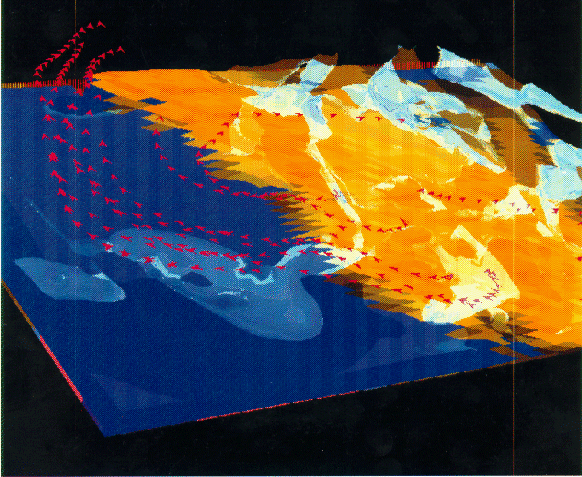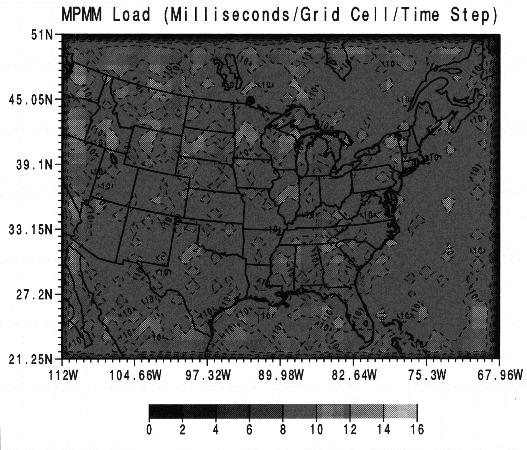
Spring/Summer 1999
Volume 6, Issue 2
Spring/Summer 1998
Volume
3, Issue 1
January 1995
Volume
2, Issue 4
October 1994
Volume
2, Issue 1
January 1994
Parallel Mesoscale Model
Ian Foster and John Michalakes, Argonne National Laboratory

An interactive tool for visualizing ouput from the MPMM mesoscale
atmospheric model. This is connected via sockets to the parallel
model and permits real-time display of model output.
Researchers at Argonne National Laboratory are developing a parallel implementation of the NCAR/Penn State Mesoscale Model, MM5. This is an atmospheric circulation model designed for regional- or continental- scale simulations and is used for a wide range of computationally demanding applications, including real-time forecasting, storms research, and climate modeling. For example, scientists at the National Center for Atmospheric Research (NCAR) use MM5 as part of an modeling system used to study regional impacts of global change.
The parallel mesoscale code is designed to exploit scalable parallel computers such as the Intel Paragon and IBM SP1, and provides support for dynamically adaptive gridding, interface modules for model coupling, and automatic mechanisms for correcting load imbalances that would otherwise reduce parallel efficiency.
These mechanisms are implemented by using Program Composition Notation (PCN), a high-level parallel programming language developed by the CRPC's Parallel Paradigm Integration group. PCN provides compiler and runtime support for the scheduling and migration of lightweight processes, and allows communications to be specified in terms of virtual channels that transparently "follow" a process when it is moved to another physical processor to achieve load balancing.
A prototype of the parallel model is operational on an Intel Delta and IBM SP1; this is currently being extended and optimized. In addition, Argonne scientists are investigating the feasibility of recoding the model in Fortran M, another CRPC-supported parallel language, in order to facilitate the transfer of the parallel model to the modeling community. This work is being conducted in collaboration with scientists Bill Kuo and Jimmy Dudhia at NCAR, George Grell at NOAA's Forecast Systems Laboratory, and Gary Walters and others at the EPA's Atmospheric Research and Exposure Assessment Laboratory.

Spatial variation in computational load in the MPMM mesoscale
atmospheric model, when executing on the Intel Delta.
Table of Contents